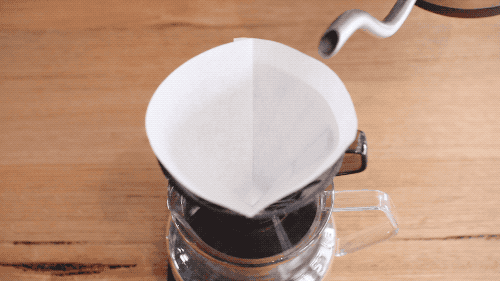Rinsing Papers

The process of preheating a filter cone can be coupled with the rinsing of filter papers. This process is essential to remove the many residues that are found in filter papers. Residues of lignin (a polymer that strengthens the cell walls in wood) in filter papers will impart a distinct cardboard-tasting taint to a brew. This is very present in unbleached filter papers because these products contain more lignin. It is easy to identify this kind of filter paper because the presence of lignin in wood and pulp cause it to be brown-coloured. We do not recommend brown-coloured filter papers for any speciality coffee applications.

Gif rinsing a filter paper
In the paper manufacturing process, the removal of lignin can be carried out in various ways. The goal of all wood-pulp bleaching methods is to break the lignin into water-soluble molecules. At paper mills, large quantities of water are needed to pulp the paper and to remove these impurities. The additional water baristas use prior to brewing is simply a repetition of the process that occurs at the mill. However, the use of very high-temperature water and the intensity of a pre-rinse of a filter paper can very effectively reduce the presence of paper taste. With bleached papers, a pre-rinse will easily reduce the cardboardy taste to a level that sits below the flavour threshold of most of us.
The most common bleaching method is what’s known as the elemental chlorine free. This process combines chlorine dioxide and oxygen in a way that prevents the formation of dioxins and carcinogens and the releases of chlorine residues into the environment, as was the case with the traditional use of chlorine in paper milling.
In this footage from the Melitta paper mill, you can observe how filter papers are made
Whilst the cardboard taint can be disturbing on the palate and the rinsing of papers helps to diminish it,